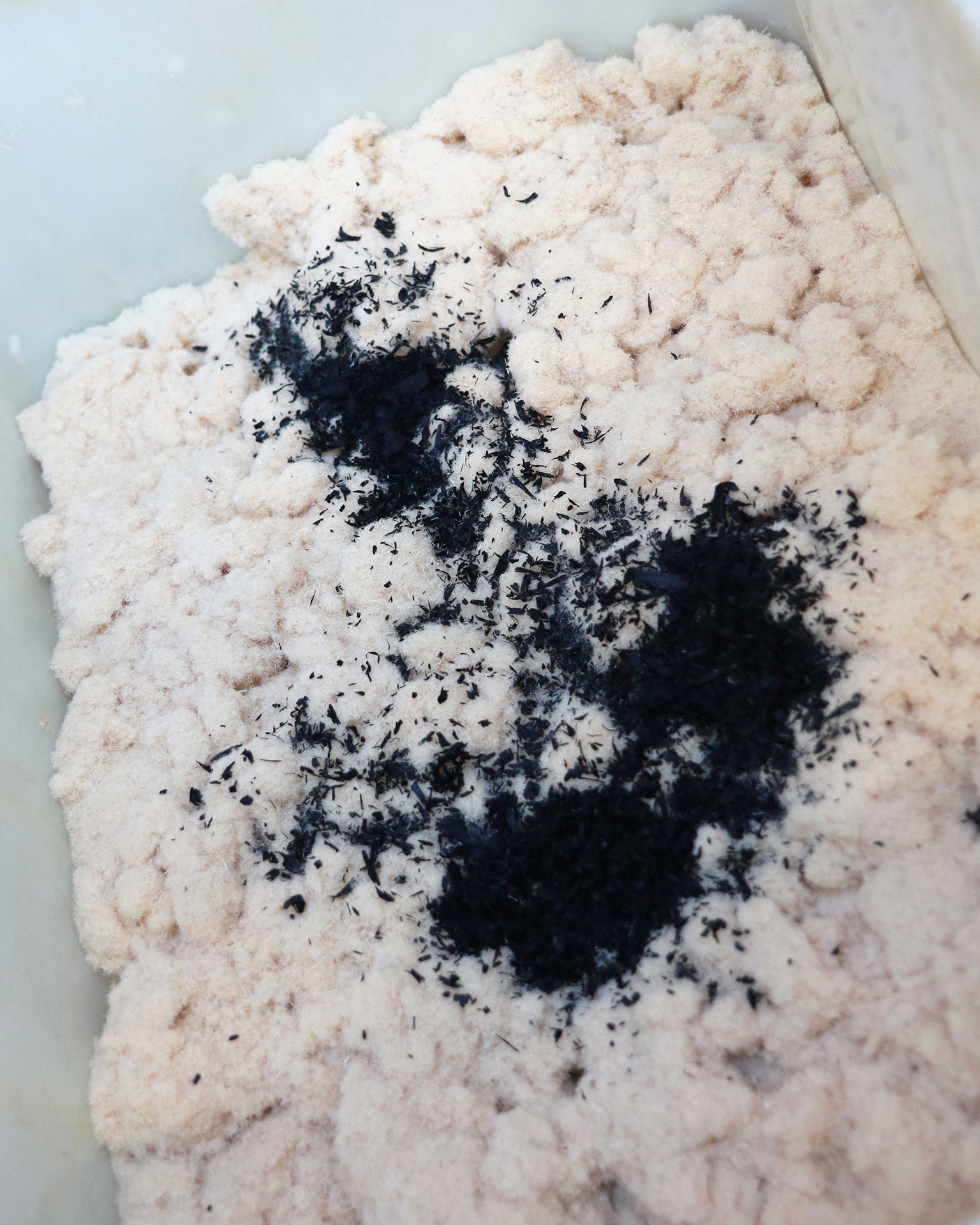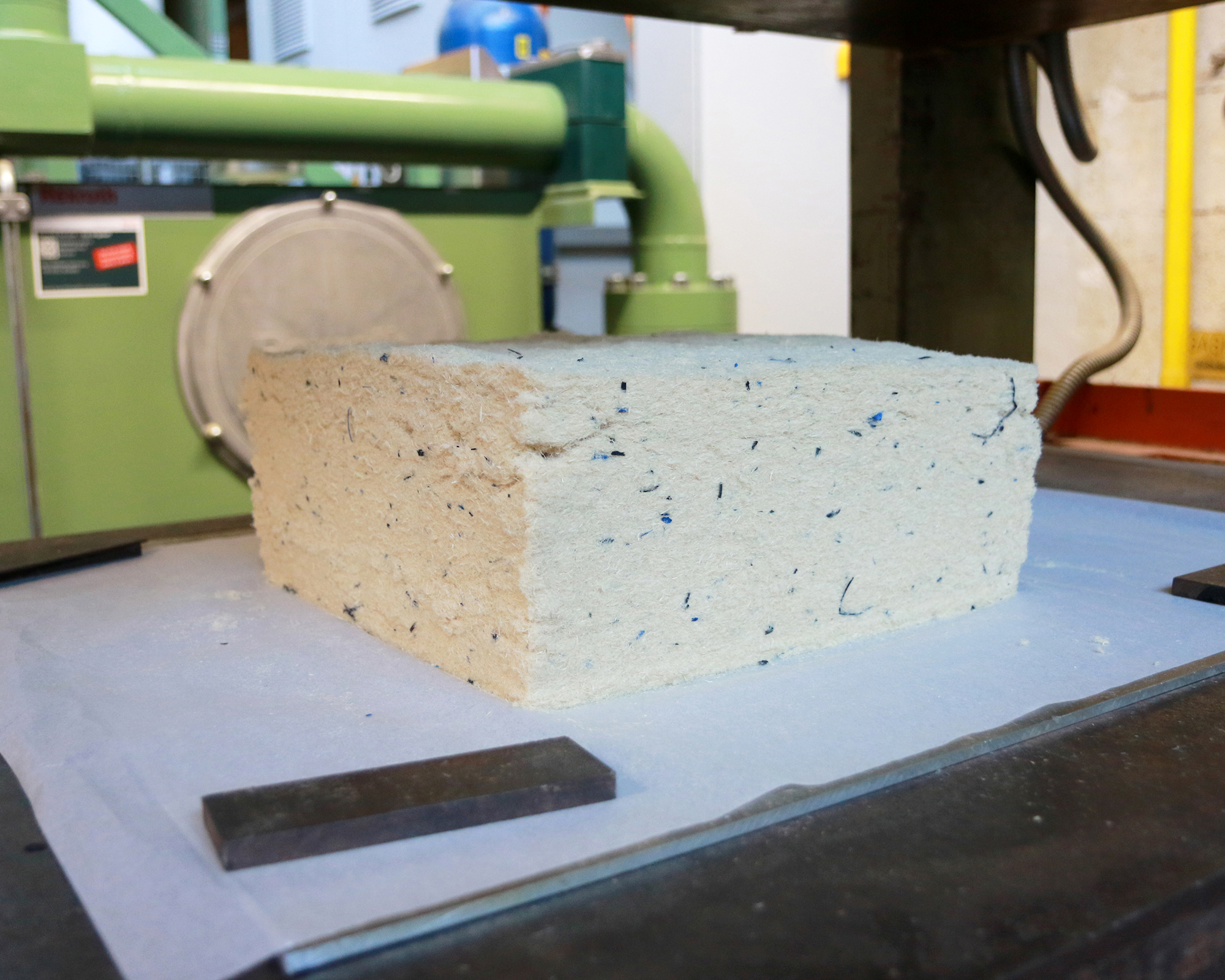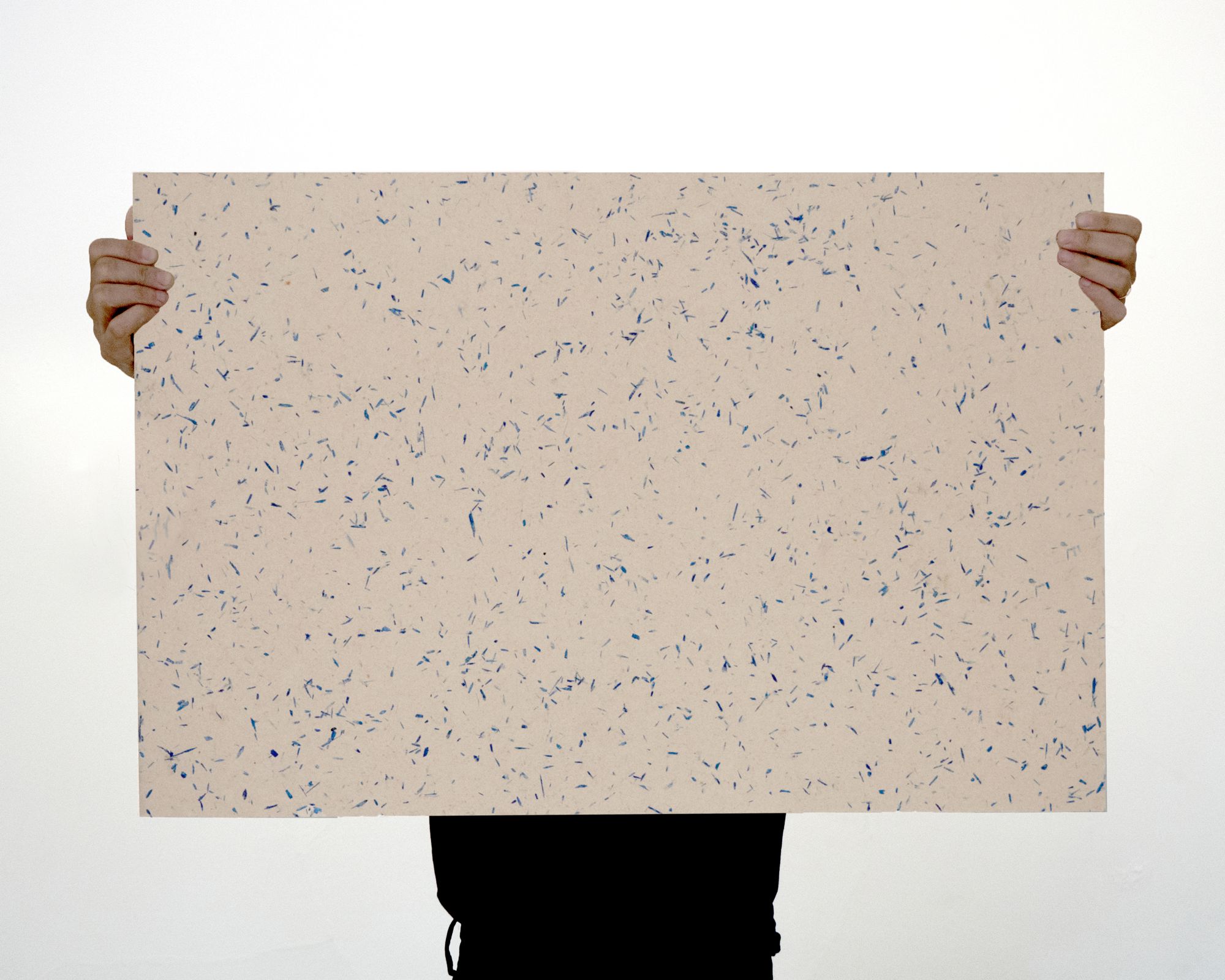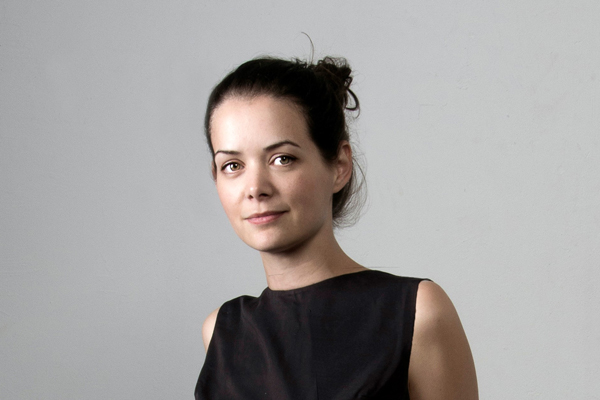In her project “Superwood”, product designer Sofia Souidi is addressing the topic of sustainable items of furniture for exhibition and trade-fair construction. The Fraunhofer WKI is providing her with support in material development and testing. In this interview, she talks about the origins of this project idea and the collaboration with the Fraunhofer WKI. Her message thereby: The interlinking of science, art and design creates advantages for both parties.
Superwood – Sustainable exhibition furniture
Interview with Sofia Souidi
What is your “Superwood” project all about?
Superwood is an environmentally friendly material which is made from recycled wood fibers, natural color particles and casein glue. Glue made from casein (milk protein) was being used as long ago as ancient Egypt as an adhesive in furniture and boatbuilding. The aim is to develop a material which can be pressed into curved shapes with the aid of forming tools. The project could find application in exhibition and trade-fair construction. In this field, large quantities of materials are installed and, after only a very short time, subsequently disposed of.
What was your motivation behind this project idea?
I wanted to develop an environmentally friendly, aesthetic material. As a product designer, I have always worked with existing materials up until now. To develop a material myself, to have a direct influence on haptics, color and, ultimately, the composition, was very interesting for me. I think that there are still a great deal of possibilities for innovation in this field.
How were you able to engage the Fraunhofer WKI as a partner for the implementation?
I have a small workshop in which I used screw clamps to press the wood fibers, utilizing techniques from letterpress printing. However, I quickly reached the limits of technical implementation and scalability, as the material is thereby not pressed together tightly enough and the surfaces were far from uniform. As a result of an earlier university excursion to a different Fraunhofer institute, I had the idea of contacting the Fraunhofer WKI. I had sample boards made in the technical center at the Fraunhofer WKI in order to test the casein glue in combination with the fibers and the natural color pigments.
How would you describe your approach to projects?
My projects usually start with content-related research into the topic I want to work on. Simultaneously, I examine images from related creative disciplines such as architecture, design and art. At this point, I am absolutely open to everything. During the process of examination, a direction then increasingly develops. Parallel to this, I often start on the workshop activities, such as building models, taking photographs and determining a context. My approach is, however, not a linear process, but instead more of a circular development. At the point where the idea is mature enough to develop it into a prototype, specialized experts are brought in.
What could science copy from art and design?
Perhaps preserving the liberty to recognize that coincidences and the unforeseen can also lead to interesting results.
Does being an artist mean that you generally approach new ideas more openly and experiment more?
I don't plan my projects from start to finish in theory. This allows me to give chance a degree of freedom. Sometimes it is the imperfect, unexpected results which are the most exciting and the starting point for new, goal-oriented solution approaches.
As an artist and designer, what have you in turn learned from the researchers and staff of the technical center at the Fraunhofer WKI?
For me, it was important to see and understand as much of the manufacturing process as possible myself. I was therefore extremely appreciative of the openness shown both to me and the project by the Fraunhofer WKI. The accuracy and documentation of the individual work steps, the technical possibilities in the Fraunhofer WKI technical center and, ultimately, the quality of the results all heavily impressed me.
What parallels do you see between science, art and design?
I think that creativity is something that connects science and design. And breaking new ground, rather than working in routines.
As an artist, how do you deal with setbacks?
As I almost always work with new materials or new technology, situations often arise in which I have to improvise or re-plan. In this project, for example, more time has to be invested in the development of the sample boards before a form as complex as a piece of furniture can be developed.



 Fraunhofer Institute for Wood Research
Fraunhofer Institute for Wood Research 